Disclosure: This article contains affiliate links. We may earn a commission from purchases at no extra cost to you, which helps our travel content.
The morning light casts long shadows across the marble-paved streets of ancient Ephesus, the silence broken only by the soft scrape of my boots against stones that have witnessed the rise and fall of empires. I've wandered many archaeological sites across four continents, but there's something uniquely transformative about exploring Ephesus alone. This ancient Roman city near Turkey's Aegean coast offers solo travelers a rare opportunity to commune with history in a setting that manages to feel both monumental and intimate. After three visits over the past decade—most recently this past spring with my well-worn Moleskine and an ever-curious spirit—I've developed a profound appreciation for how this archaeological wonder rewards the solitary explorer willing to step beyond the standard tourist circuit.
Arriving in Ephesus: Practical Matters for the Solo Explorer
Most travelers base themselves in nearby Selçuk, a modest Turkish town that serves as the gateway to Ephesus. On my recent spring visit, I opted for a small, family-run pension in Selçuk's old quarter—a decision that immediately immersed me in local rhythms while keeping me just a comfortable 25-minute walk from the archaeological site's south entrance.
As a solo traveler who values both independence and connection, I've found Turkey's dolmuş (shared minibus) system to be remarkably efficient. These minibuses run frequently between Selçuk's center and both the upper and lower gates of Ephesus for a nominal fee. However, I recommend walking at least one way—the route offers glimpses of rural Turkish life that most package tourists miss entirely.
For those flying in, Izmir's international airport lies about an hour away, with regular shuttles to Selçuk. I typically travel with my carry-on backpack, which has proven perfect for navigating Turkey's varied terrain while keeping my essentials secure and accessible.
One practical matter that caught me off-guard during my first visit: Ephesus offers little shade and water costs a premium inside the site. My second and third visits were far more comfortable thanks to a wide-brimmed hat and a reliable insulated water bottle that kept my water cool throughout those warm Mediterranean afternoons.

💡 Pro Tips
- Arrive at opening time (8:30 AM) to explore the Library of Celsus before tour groups arrive
- Enter through the lower gate and work your way uphill rather than the reverse—it's less strenuous and offers better photo opportunities
- Download the Ephesus audio guide app before your visit, as on-site WiFi is unreliable
Beyond the Guidebook: Hidden Corners of Ephesus
While the magnificent Library of Celsus and the grand theater rightfully draw attention, Ephesus rewards the patient solo explorer with less-trafficked treasures that speak volumes about daily life in antiquity. On my third visit this spring, I deliberately lingered behind the tour groups, allowing their chatter to fade into the distance.
The Terrace Houses—sometimes called the 'Beverly Hills of Ephesus'—require a separate ticket but offer an intimate glimpse into the lives of wealthy Romans. Walking through the climate-controlled excavation site, I marveled at the remarkably preserved mosaics and frescoes depicting scenes of mythology and everyday life. The ongoing archaeological work here creates a living laboratory where you might chat with researchers if timing and curiosity align.
Further afield, I discovered the haunting remnants of the Church of Mary, where early Christians gathered in the shadow of pagan temples—a physical manifestation of the religious transition that reshaped the ancient world. Few tour groups venture to this quieter corner, allowing for moments of contemplation impossible to find at the main attractions.
Perhaps my most cherished discovery came on an early morning walk along the Sacred Way. Noticing a small path diverging from the main thoroughfare, I followed it to a partially excavated residential area where wildflowers had reclaimed ancient courtyards. Sitting alone on a fallen column, watching swallows dart between broken arches, I experienced that rare sensation of time folding in on itself—the present momentarily touching the past.
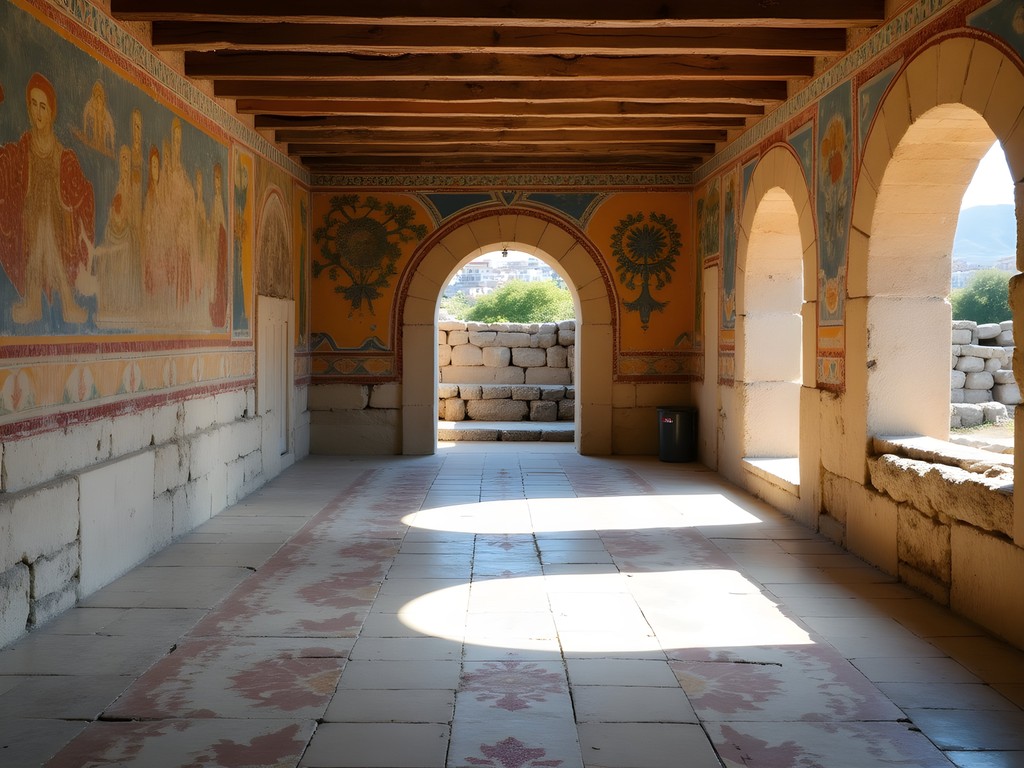
💡 Pro Tips
- Visit the Terrace Houses mid-afternoon when most tour groups have moved on
- Look for the ancient graffiti etched into marble near the brothel—including directions and pricing!
- The acoustics in the Odeon (small theater) are remarkable—stand center stage and recite something meaningful to experience how performers connected with audiences 2,000 years ago
Navigating Ephesus Safely as a Solo Traveler
Safety concerns often deter potential solo travelers from exploring Turkey, but my multiple visits to Ephesus have consistently reinforced my belief that such worries are largely overblown. The archaeological site itself is well-managed, with security personnel present throughout and clear pathways that minimize physical risks even for those with moderate mobility challenges.
That said, practical precautions enhance any solo journey. The Mediterranean sun can be unforgiving, particularly during late morning and early afternoon hours. I've learned to carry a packable sun hat that offers crucial protection while exploring exposed ruins. Sturdy walking shoes with good traction are non-negotiable—those ancient marble streets become surprisingly slippery when worn smooth by millions of footsteps over centuries.
As for personal security, I've found the vendors and guides around Ephesus to be persistent but respectful. A firm but polite "No, thank you" (or "Teşekkür ederim, hayır" if you're feeling linguistically adventurous) generally suffices. Female solo travelers I've spoken with report similar experiences, though several mentioned dressing modestly helped reduce unwanted attention.
Perhaps the greatest safety advantage for solo travelers is flexibility. When an unexpected spring shower descended during my recent visit, I simply ducked into the covered section of the Terrace Houses while watching large tour groups scatter in confusion. By the time the brief shower passed, I had the magnificent Library of Celsus almost entirely to myself—a photographer's dream and a moment of connection with antiquity that felt almost mystical in its intimacy.

💡 Pro Tips
- Carry a photocopy of your passport while keeping the original secured in your accommodation
- Register your visit with your country's travel advisory service for added security
- Learn a few basic Turkish phrases—locals appreciate the effort and are more likely to look out for travelers who show cultural respect
Ephesus Through a Literary Lens
Perhaps it's the occupational hazard of being a literary agent, but I find myself drawn to destinations with rich textual histories. Ephesus offers this in abundance. Before my first visit, I immersed myself in the letters of St. Paul to the Ephesians, written to the early Christian community that once walked these same streets. During my recent spring sojourn, I brought along Mary Renault's The Last of the Wine—though set in Athens, its evocative portrayal of classical life enriched my understanding of Ephesus' urban landscape.
I've developed a habit of carrying a slim travel journal dedicated to each significant journey. At Ephesus, I found myself filling pages not just with observations but with questions: What conversations echoed through the grand colonnade? What dreams and fears occupied the minds that designed the ingenious aqueduct system? What political intrigues unfolded in the shadow of the Temple of Hadrian?
The archaeological museum in nearby Selçuk (often overlooked by day-trippers) houses the famous statue of Artemis found at Ephesus—a fertility goddess adorned with multiple breasts or, as some scholars suggest, bull testicles. This striking representation speaks to the complex religious syncretism that characterized ancient port cities. Sitting before this enigmatic figure, I found myself contemplating how easily our modern interpretations might misread the symbols that seemed so evident to ancient eyes.
For the literary-minded solo traveler, I recommend bringing a relevant text to read on site. Finding a quiet corner near the Odeon to read passages from Acts of the Apostles describing the silversmith riot against early Christians creates a profound connection across millennia—the words and stones in dialogue with each other, with you as the privileged intermediary.

💡 Pro Tips
- Visit the Ephesus Archaeological Museum in Selçuk either before or after the main site for crucial context
- Bring a relevant historical or literary work to read on site for a deeper connection
- Consider hiring a specialized guide with archaeological or historical expertise rather than a general tourist guide
Authentic Connections: Beyond the Ancient Stones
While Ephesus itself commands attention, the surrounding landscape offers contextual richness that enhances understanding of why this city flourished. During my spring visit, I dedicated a full day to exploring the periphery, beginning with the humble House of the Virgin Mary tucked into the forested hills above the ancient city.
Regardless of one's religious inclinations, this simple stone dwelling—believed by many to be where Mary spent her final years—offers a contemplative counterpoint to the grandeur of imperial architecture below. I arrived early, before the tour buses, and found myself alone in the small garden where visitors pin handwritten prayers to a wall. The multilingual supplications—some joyful, others heartbreaking—created a tapestry of human longing that transcended time and culture.
In the afternoon, I ventured to the nearby village of Şirince, once a Greek settlement whose stone houses and narrow streets preserve an architectural heritage largely erased elsewhere in the region. Here, local women sell handcrafted lace and fruit wines made from traditional recipes. Rather than rushing through, I lingered at a small family restaurant where three generations worked together preparing traditional Turkish dishes. My rudimentary Turkish and their limited English created a comical but warm exchange that culminated in an impromptu cooking lesson in preparing proper köfte.
The evening found me back in Selçuk at a small teahouse near the aqueduct, where I'd noticed local men gathering to play backgammon. Hesitantly approaching with my travel backgammon set, I was immediately welcomed into a game. Though thoroughly trounced by a gentleman who appeared to be in his eighties, the experience—punctuated by strong Turkish tea and much good-natured laughter—provided insights into local culture no guidebook could offer.

💡 Pro Tips
- Visit the House of the Virgin Mary first thing in the morning before tour groups arrive
- In Şirince, venture beyond the main street to find authentic family restaurants where prices are lower and experiences more genuine
- Learn the basics of backgammon before your trip—it's a universal language in Turkey and an excellent way to make local connections
Final Thoughts
As twilight descended on my final evening in Ephesus, I found myself sitting alone on a fallen column at the edge of the ancient agora. A nightingale sang somewhere in the gathering shadows while distant calls to prayer floated from Selçuk's minarets. In that moment, the artificial boundaries between past and present, between visitor and place, seemed to dissolve entirely. Ephesus offers the solo traveler something increasingly rare in our hyperconnected age: the space to forge a personal relationship with history unmediated by consensus interpretation or social distraction. Whether you're drawn by archaeological interest, spiritual curiosity, or simply the desire to walk ancient streets in contemplative solitude, Ephesus rewards the independent explorer willing to linger beyond the obvious and listen to the stories written in stone. I invite you to experience it alone—not in isolation, but in communion with the enduring human narrative that continues to unfold in this remarkable corner of Turkey.
✨ Key Takeaways
- Visit Ephesus in early morning or late afternoon to avoid crowds and experience the site at its most atmospheric
- Expand your exploration beyond the main archaeological site to include surrounding cultural attractions like Şirince village
- Solo travel in this region is generally safe and rewarding with basic precautions and cultural sensitivity
- Allow yourself unstructured time to simply absorb the atmosphere—some of the most meaningful experiences come when you step away from your itinerary
📋 Practical Information
Best Time to Visit
Mid-April to early June or September to October
Budget Estimate
$50-75 per day excluding flights
Recommended Duration
2-3 days
Difficulty Level
Moderate

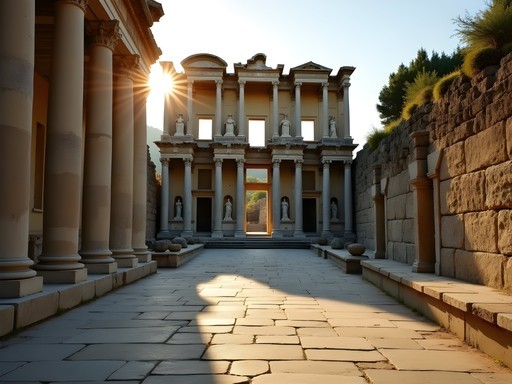
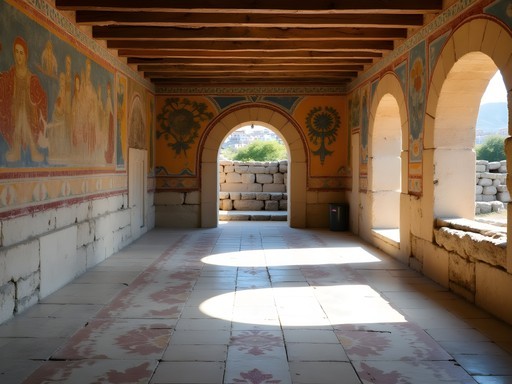

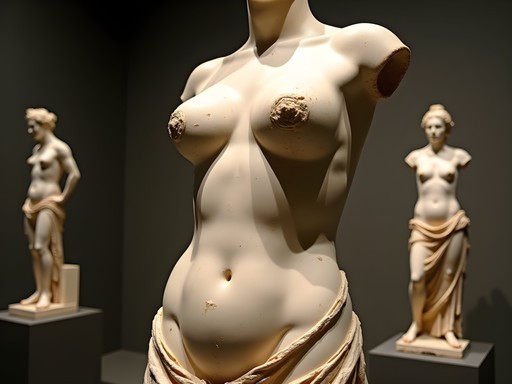
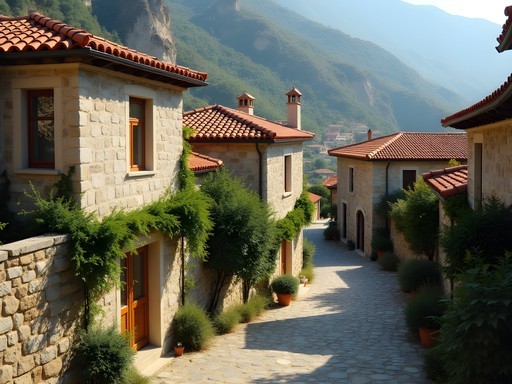


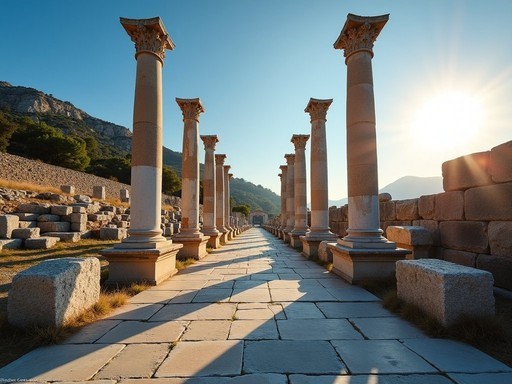
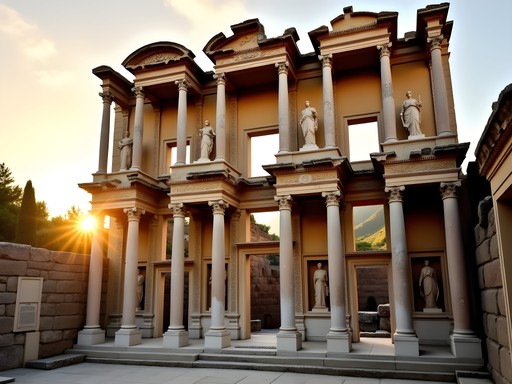






Comments
sunnytime1335
Just got back from Ephesus last month and this post is spot on! The morning light really does hit different there. We did the public transportation too and saved so much compared to the tour groups. That hidden path behind the Library of Celsus you mentioned was magical - barely any other tourists there when we went. Did anyone else notice how the cats seem to own the place? They were like little furry tour guides!
Casey Andersson
Your twilight moment on that fallen column brought back such vivid memories! Last summer, I splurged on a private after-hours tour of Ephesus (worth every penny) and had a similar experience watching the sunset paint those ancient stones in gold. There's something about experiencing these places alone that lets you connect across time in a way that's impossible with crowds. Funny story - while exploring those residential terraces you mentioned, I stumbled upon an archaeological team carefully documenting some newly uncovered mosaics. They invited me to look through their special lights that revealed pigments invisible to the naked eye. Apparently the blues and reds that have faded over millennia briefly become visible with the right equipment. It was like seeing a ghost of Ephesus as it truly was - vibrant and alive with color! Sometimes the best experiences come from simply being curious and respectful when you travel solo.
nomadguide
That after-hours tour sounds amazing! Do you remember which company you used? Definitely want to look into that option.
Casey Andersson
I arranged it through a local guide in Selçuk named Mehmet who works with the museum. His contact info should be in my Turkey highlight reel on Instagram if you want to reach out!
Sarah Powell
John, I appreciate your thoughtful analysis of safety considerations for solo travelers. Having visited Ephesus three times over the past decade, I've observed how the experience has evolved. Your point about the contrast between the crowded main thoroughfare and the peaceful residential terraces is spot on. I've found that most visitors never venture up to those hillside homes, which is where you really get a sense of daily Roman life. One observation to add: the changing light throughout the day dramatically transforms these ruins. The morning illuminates the eastern structures beautifully, while afternoon light brings the Library of Celsus and Great Theater to life. For photographers, it's worth planning around these lighting conditions rather than just avoiding crowds. Did you notice how the acoustics in the theater change depending on the time of day and humidity levels?
nomadblogger706
Just got back from Turkey last week and your post makes me wish I'd spent more time in Ephesus! We did the public transportation option you mentioned and it worked great - saved so much compared to the tours. One tip for others: we found this little family restaurant just outside the north entrance called Selçuk Kitchen that served the most amazing gözleme I've had anywhere in Turkey. The grandmother making them by hand was a highlight of our day! Did anyone else notice how slippery those marble streets get? My travel buddy took a tumble near the theater.
sunsetexplorer
Oh yes, I nearly wiped out on those marble streets too! Definitely not the place for smooth-soled shoes. That restaurant sounds amazing - adding it to my list for next time!
nomadguide
Those photos of the Library of Celsus at sunrise are absolutely stunning! Major travel envy right now.
oceanbuddy
Great post! I'm planning a solo trip to Turkey next month and Ephesus is high on my list. How crowded was it when you visited? I'm trying to decide if I should go super early or late afternoon for the best experience.
John Ortiz
I'd definitely recommend first thing in the morning (they open at 8am). By 10am the tour buses arrive and the main sites get crowded. The light is beautiful early too - great for photos!
oceanbuddy
Perfect, thanks! Setting my alarm for an early start then. Did you find the audio guide worth it or better to just explore on your own?
John Ortiz
I actually enjoyed having the audio guide - gives you freedom to move at your own pace but with context. The Rick Steves Turkey guidebook also has a great walking tour section for Ephesus if you prefer reading.
sunsetexplorer
John, your description of the morning light on those ancient streets took me right back to my visit last year! I also did Ephesus solo and found those hidden corners you mentioned beyond the Library of Celsus to be completely magical - barely another tourist in sight. Did you manage to catch that small temple area near the eastern gate? The local guide I met showed me ancient graffiti there that most visitors miss completely. Your literary lens section gave me a whole new appreciation too - I'm definitely bringing some Mary Renault next time!
John Ortiz
Thanks for the kind words! I did find that eastern gate area - amazing how the light hits those carvings in the late afternoon. Mary Renault completely transforms the experience, doesn't she?
sunsetexplorer
Absolutely! Her descriptions make those stones come alive with the echoes of ancient footsteps. Planning another visit this spring!
Sophia Gomez
John, your section on 'Hidden Corners of Ephesus' gave me goosebumps! I was there on business last summer and managed to sneak away for a day to explore Ephesus. I wish I'd had your guide then! I completely missed that secluded spot near the eastern gate you mentioned. The contrast between my rushed visit and your mindful exploration is making me plan a return trip where I can truly absorb the history at a slower pace. Your description of standing in the Great Theater and imagining St. Paul addressing the silversmiths - that's the kind of connection to history I crave when traveling. Do you think one full day is enough, or would you recommend splitting it into two shorter visits?
John Ortiz
Sophia, if you can manage it, I'd absolutely recommend splitting into two visits - perhaps early morning one day for the main site when it's cooler and quieter, then another half-day for the Terrace Houses and some of the less-visited areas. The changing light throughout the day transforms the site completely!
coffeegal
We did the public transportation too and it was great! Much cheaper than the tours.
moonone
Did you stay in Selçuk? Trying to decide between there and Kuşadası for my base.
coffeegal
Stayed in Selçuk - so much more authentic and just a short dolmuş ride to the ruins. Plus you can walk to St. John's Basilica and the Isa Bey Mosque easily!
Amit Sullivan
John, your post transported me back to my own solitary wanderings through Ephesus some fifteen years ago. I remember arriving just as the site opened, armed with my travel journal and a thermos of tea. The morning light on those ancient stones creates a kind of magic that disappears once the tour buses arrive. Your section on 'Ephesus Through a Literary Lens' particularly resonated - I spent hours sitting near the Great Theater, reading passages from St. Paul's letters to the Ephesians in the very city where they were received. Sometimes the most profound travel experiences come not from seeing everything, but from sitting still long enough to let history speak to you. Beautifully written piece, mate.
John Ortiz
Thank you, Amit! I love your approach of reading St. Paul's letters on site - that's exactly the kind of immersive experience I was trying to capture. There's something about those quiet moments that connects us across millennia.
Venture X
Premium card with 2X miles, $300 travel credit, Priority Pass